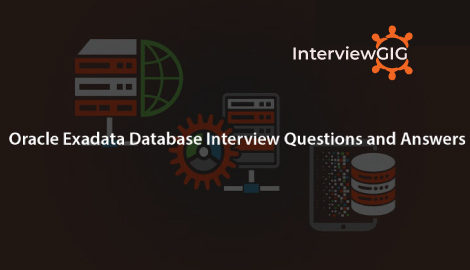Redis is an open-source (BSD licensed), in-memory database project implementing a distributed, and in-memory key-value store with optional durability. Redis supports different kinds of abstract data structures, such as strings, lists, maps, sets, sorted sets, hyperloglogs, bitmaps and spatial indexes. The project is mainly developed by Salvatore Sanfilippo and is currently sponsored by Redis Labs. Redis Labs creates and maintains the official Redis Enterprise Pack. Redis has built-in replication, Lua scripting, LRU eviction, transactions and different levels of on-disk persistence, and provides high availability via Redis Sentinel and automatic partitioning with Redis Cluster.
Redis is an in-memory key-value data store, crafted in the ANSI C programming language, and credited to Salvatore Sanfilippo. Unlike many other data stores, Redis extends its support beyond simple string data types, encompassing a rich array of structures like lists, sets, sorted sets, and hashes. This versatility is complemented by a robust set of operations tailored for seamless manipulation of these data types. In essence, Redis serves as an advanced iteration of Memcached, often referred to as “Memcached++.”
Redis not only facilitates in-memory storage but also excels in durability with features like data replication and the ability to persist data on disk. This dual capability makes it a powerful choice for scenarios requiring both high-speed, in-memory access and long-term data storage.
The name “Redis” itself is an acronym denoting “REmote Dictionary Server.” Salvatore Sanfilippo, the visionary behind Redis, joined VMware in March 2010. Over time, Redis gained sponsorship from notable entities, initially backed by Pivotal Software (a VMware spin-off) in May 2013, and subsequently supported by Redis Labs from June 2015 onwards. These sponsorships signify the recognition and backing that Redis has received within the software development community.
Basic Redis Interview Questions and Answers
What is Redis?
Why Redis?
What are the key features of Redis?
What are Redis Supported Languages?
In which language Redis is written?
Which are the most popular companies using redis?
Can you explain Redis Data Structure?
Can you explain Persistence?
Can you explain Redis Replication?
What happens if Redis runs out of memory?
What is AOF?
What is the difference between overriding a value by using set vs append?
What is difference between MemcacheD and Redis?
What are the Similarities between Memcached and Redis?
What is the difference between Redis and RDBMS?
How can you improve the durability in redis?
How do i move a redis database from one server to another?
Can you list the operation keys?
How can you use redis with .net application?
How does redis differ from mongodb? Is there a use case when for redis if using mongodb?
How to check redis is running?
How to set multiple values (array) in redis?
How can use SAVE command in Redis Backup & Restore?
How do I move a redis database from one server to another?
What do you mean by redis is binary safe?
How to stop Redis?
What are the pros and cons of Redis?
Advanced Redis Interview Questions and Answers (with Scenarios’)-(Last Updated February 2024)
Question 1: Explain the trade-offs between different persistence options (RDB, AOF) and when to choose each?
RDB (Snapshotting):
Pros:
- Efficient for backups and point-in-time recovery.
- Consumes less disk space compared to AOF.
Cons:
- Potential data loss since snapshots are periodic.
- Longer recovery time in case of a failure.
AOF (Append-Only File):
Pros:
- Log of every write operation provides durability.
- Allows for more fine-grained recovery.
Cons:
- Larger file size compared to RDB.
- Slower recovery due to replaying the log.
When to Choose:
RDB:
- Suitable for use cases where periodic backups are acceptable.
- Lower disk space is a priority.
AOF:
- Optimal for scenarios demanding more fine-grained durability.
- Faster recovery is crucial.
Question 2: Describe Redis clustering (Cluster mode, Sentinel) and its limitations?
Cluster Mode:
Pros:
- Horizontal scaling for high availability and improved performance.
- Automatic sharding for data distribution.
Cons:
- Increased complexity compared to standalone mode.
- Limited to certain Redis commands in cluster mode.
Sentinel:
Pros:
- Monitors and manages Redis instances for high availability.
- Automatic failover.
Cons:
- May introduce additional network traffic due to monitoring.
Limitations:
- -Partial Redis Commands Support:
- -Not all commands are supported in cluster mode.
- -Configuration Complexity:
- -Setting up and configuring a Redis cluster involves careful planning.
- -Memory Requirements:
- -Requires sufficient memory for node-to-node communication.
Question 3: How would you design a caching strategy using Redis for a high-traffic application?
Design Considerations:
- -Utilize Redis as an in-memory cache.
- -Implement data expiration to handle cache staleness.
- -Consider a tiered caching strategy with different TTLs for frequently accessed and less frequently accessed data.
- -Monitor cache hit rates and adjust caching strategies accordingly.
- -Use features like Redis Pub/Sub for cache invalidation.
Question 4: How would you design a caching strategy using Redis for a high-traffic application?
Capabilities:
- Redis supports Lua scripting for server-side operations.
- Lua scripts are atomic and can be executed with a single network round trip.
- Enables complex data manipulations without round-tripping to the client.
Use Cases:
- Transactional operations.
- Complex data manipulation and filtering.
- Implementing server-side business logic.
Question 5: Explain Bloom filters and their applications in Redis.:
Bloom Filters:
- A space-efficient probabilistic data structure for set membership tests.
- Can have false positives but no false negatives.
Applications in Redis:
- Reducing disk I/O by using a Bloom filter for key existence checks before accessing the actual data.
- Optimize cache lookups by using a Bloom filter to quickly check if a key may exist in the cache.
Question 6: Compare and contrast Redis with Memcached and other in-memory databases?
Redis:
- Supports various data structures.
- Persistence options for durability.
- Advanced features like Pub/Sub and Lua scripting.
- More suitable for use cases requiring data manipulation and complex operations.
Memcached:
- Simpler, focused on key-value caching.
- No persistence options by default.
- Better suited for straightforward caching scenarios with minimal data manipulation requirements.
Other In-Memory Databases:
- Each may have its strengths and weaknesses.
- Redis often stands out due to its versatility, persistence options, and additional features.
Question 7: Describe techniques for monitoring and troubleshooting Redis performance issues?
Monitoring Techniques:
- Use Redis Monitoring Tools:
- Tools like Redis-cli, RedisInsight, and RedisStat provide real-time insights into Redis server metrics.
- Leverage Redis Commands:
- Use commands like INFO, MONITOR, and CLIENT LIST for detailed information on the Redis instance.
- Key Metrics to Monitor:
- Memory usage, command latency, cache hit rates, CPU usage, and connected clients.
Troubleshooting Techniques:
- Analyze Redis Logs:
- Examine Redis logs for error messages and warnings.
- Check Command Latency:
- Identify slow commands using the SLOWLOG command.
- Memory Fragmentation:
- Monitor memory fragmentation and optimize the configuration if needed.
- Examine Connected Clients:
- Identify and investigate unusually high numbers of connected clients.
- Redis Replication Lag:
- Monitor replication lag in case of Redis replication.
Question 8: How can you optimize Redis key sizes and data structures for faster access?
- Use Short Key Names:
- Shorter key names reduce memory usage and improve performance.
- Hash Collisions:
- Be mindful of hash collisions, especially in sets or hash data structures.
- Data Serialization:
- Optimize data serialization formats for storage efficiency.
- Data Structure Choice:
- Choose the most suitable data structure based on access patterns (e.g., using sets for unique values).
- Memory Efficiency:
- Understand the memory overhead of different data structures and select appropriately.
Question 9: Explain pipelining and transactions in Redis and their performance implications?
Pipelining:
- Definition:
- Pipelining allows sending multiple commands to the server without waiting for each response, reducing round-trip latency.
- Performance Implications:
- Significant reduction in network overhead and improved throughput.
Transactions:
- Definition:
- Redis transactions group multiple commands into a single atomic operation.
- Performance Implications:
- While transactions provide atomicity, they can impact performance due to the overhead of locking and processing multiple commands as a single unit.
Question 10: You are experiencing high write volumes in your Redis instance. How would you diagnose and address the issue?
- Monitor Command Latency:
- Identify which write commands are causing latency using the SLOWLOG command.
- Check for Long Transactions:
- Identify and optimize long transactions that might be holding locks for an extended period.
- Examine Memory Usage:
- Evaluate memory usage to ensure it’s not reaching critical levels.
- Review Configuration:
- Check Redis configuration settings related to write operations and adjust accordingly.
- Optimize Data Structures:
- Choose the most efficient data structures for your write patterns.
- Consider Sharding:
- Sharding can distribute write load across multiple Redis instances.
Question 11: Design a real-time leader election system using Redis Pub/Sub?
Requirements:
- Leader Identification:
- Each participant subscribes to a Redis Pub/Sub channel and identifies itself.
- Heartbeats:
- Participants periodically publish heartbeats to the channel to signify their availability.
- Leader Selection:
- The participant with the highest priority (e.g., timestamp or a predefined order) becomes the leader.
- Handling Leader Failures:
- If the leader fails to send heartbeats, a new leader is elected based on the next highest priority.
- Handling Network Partitions:
- Implement a consensus algorithm or additional checks to handle network partitions and prevent split-brain scenarios.
- Atomicity with Lua Scripting:
- Use Lua scripting in Redis to ensure atomicity in leader election operations.
Question 12: Explain how you would use Redis to implement a session store for a web application?
To implement a session store for a web application using Redis:
- Session Data Storage:
- Store session data in Redis using a unique key for each user session.
- Expiration Time:
- Set a time-to-live (TTL) for each session key to manage session expiration automatically.
- Read and Update:
- Read and update session data in Redis upon user interactions to keep sessions active.
- Secure Session ID:
- Use a secure and unique session ID for each user to access their session data in Redis.
- Access Control:
- Implement access controls and encryption mechanisms to secure session data in transit and at rest.
- Optimizations:
- Leverage Redis features like pipelining for efficient batch operations on session data.





